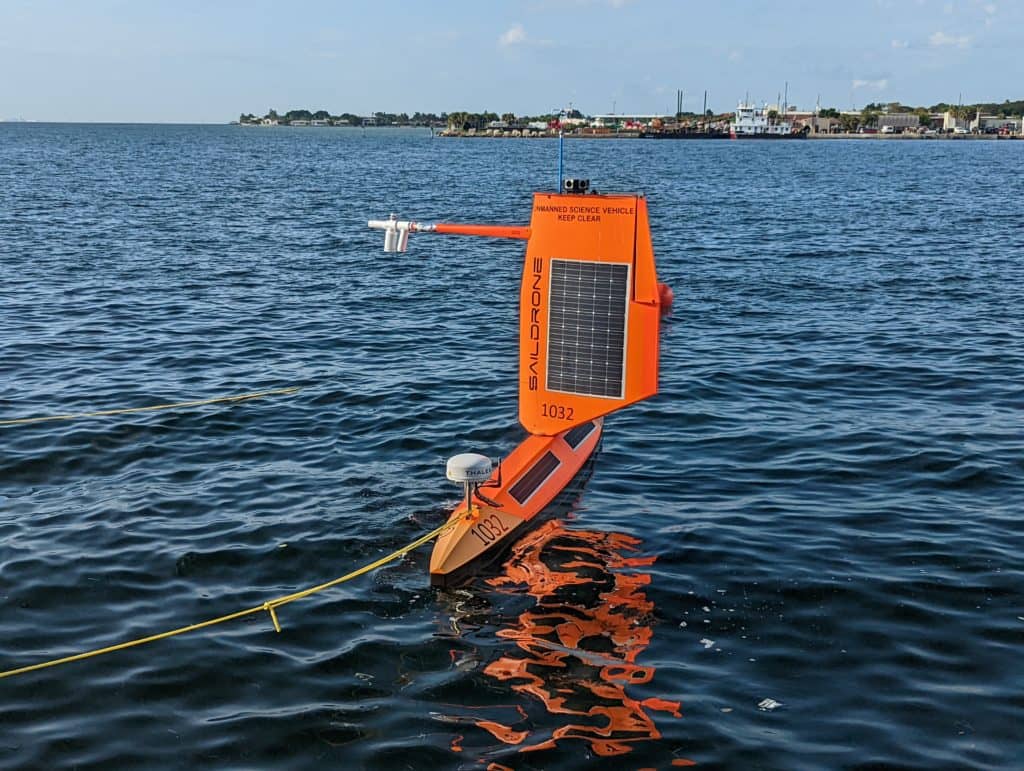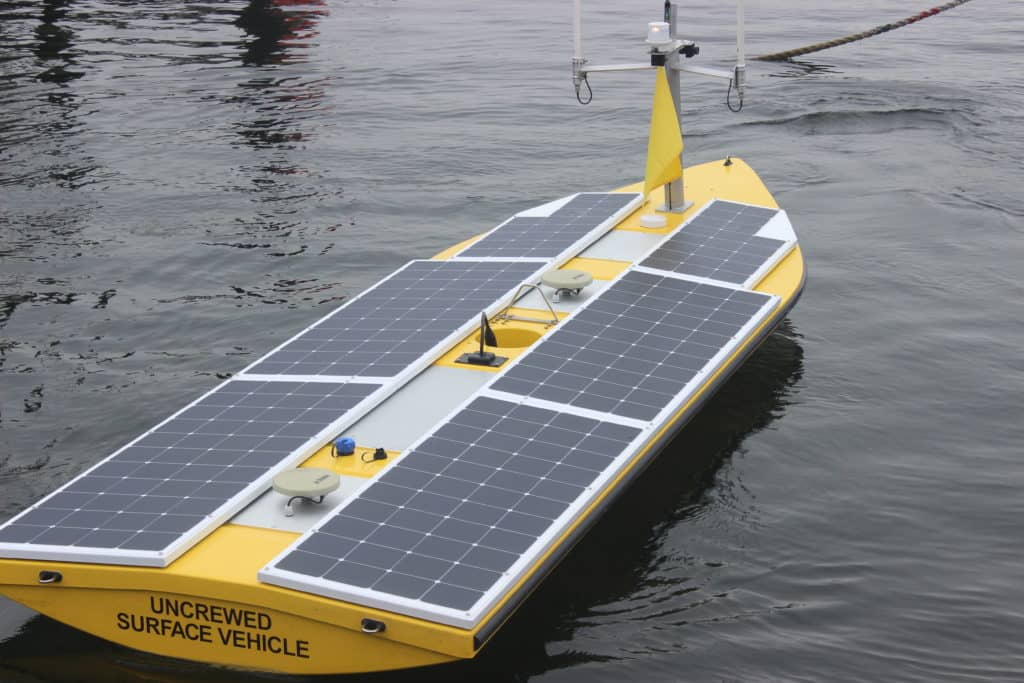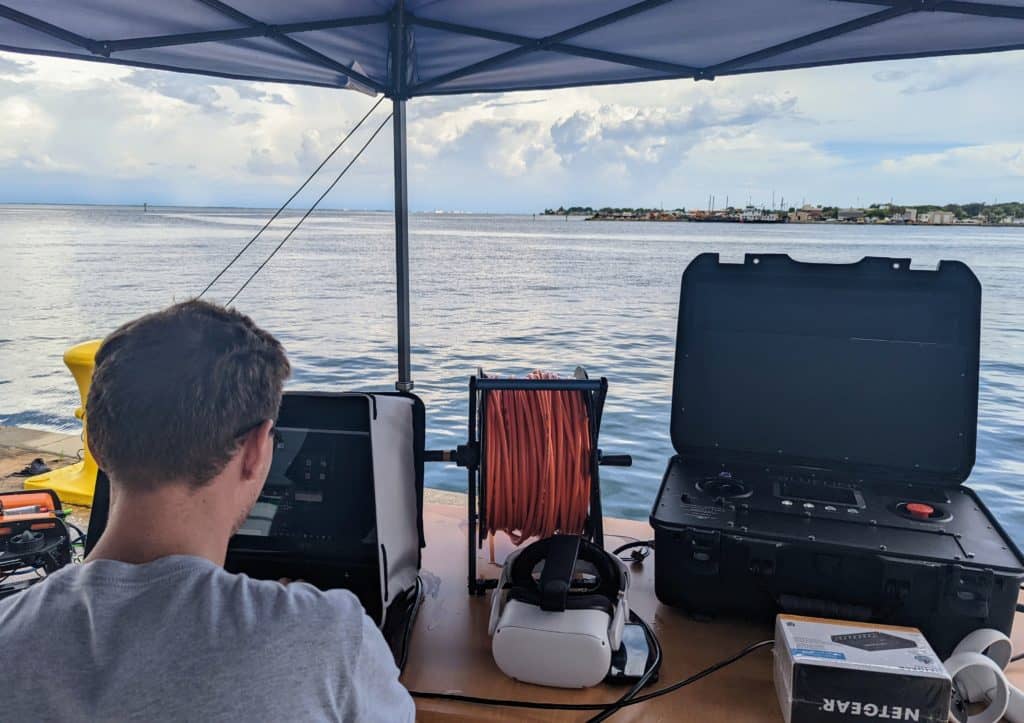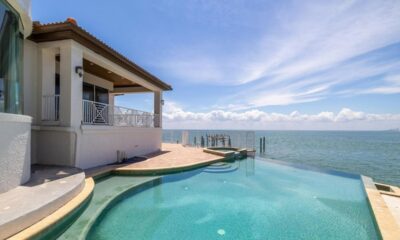What the ‘new blue economy’ means for St. Pete
A peninsula on a peninsula, St. Petersburg’s most significant resource is its extensive coastline; in addition to recreational activities, it also provides another valuable commodity – data.
While water-related tourism is an obvious economic driver, local leaders now hope to utilize improved collection, analysis and dissemination of marine-based data to spur financial growth and address societal challenges. The nation’s leading scientists refer to it as the “new blue economy.”
With the University of South Florida St. Petersburg’s College of Marine Science and the neighboring Maritime and Defense Technology Hub, along with most other organizations in the Innovation District, City Councilmember Copley Gerdes told the Catalyst that St. Pete is well-positioned to become an international leader in the industry.
“When we bring all these pieces together and create a synthesis around that, it’s an economic driver for the city – which is an amazing thing,” said Gerdes. “The best part is that driver is then creating sustainable practices.”
Dr. Rick Spinrad, administrator for the National Oceanic and Atmospheric Administration (NOAA) and under-secretary of commerce, is leading the discussion on the possibilities and impacts of the new blue economy. An article written by Spinrad for the Integrated Ocean Observing System noted that the American blue economy supported 2.4 million jobs and contributed $397 billion to the nation’s gross domestic product in 2019.
He also stated that it grew faster than America’s economy “in its entirety.” The blue economy, Spinrad wrote, accomplished that through tourism and recreation, shipping and transportation, commercial and recreational fishing, power generation, research and related goods and services.
The new blue economy, explained Spinrad, builds on the traditional version by harnessing the power of big data. Various public, private, government and academic organizations can then use that information to position offshore wind and aquaculture farms, create more efficient shipping routes, bolster environmental resiliency and better predict weather events.

Saildrone launched this uncrewed surface vehicle from the Hub to collect data on how hurricanes grow and intensify.
Spinrad visited St. Pete when the Innovation District held its ribbon-cutting ceremony for the Hub in March. He expressed that the facility – and the surrounding organizations – had the level of public, private and academic partnerships needed to unlock the new blue economy’s potential.
“The connective tissue, the cohesiveness and the potential for extraordinary impact are like nothing I have ever seen before,” said Spinrad at the event. “I can’t say that strongly enough.”
Companies and organizations that operate inside and near the Hub continue working to strengthen partnerships and unlock that potential. Local leaders like Gerdes anxiously await the results.
“They’re doing some amazing things at the Innovation Hub,” he said. “Imagine if you could take the Innovation Hub and expand it exponentially. Alison Barlow (executive director of St. Pete Innovation District) is just an absolute rockstar. Across the country, people have seen what she’s helped create – her brainchild at the Hub – and I think any institution would be crazy not to try and expand that.”
USFSP’s College of Marine Science, the Florida Flood Hub, Coast Guard Sector St. Petersburg, a Florida Fish and Wildlife Research Institute, and NOAA’s regional office all sit within a few blocks of each other on Bayboro Harbor. The U.S. Geological Survey’s Coastal and Marine Science Center is less than a mile away.
With the university’s proposed Environmental and Oceanographic Sciences Research and Teaching Facility (EOS) adding to the wealth of maritime-based knowledge in the area, Gerdes said the city could become a global leader in the new blue economy and environmental sustainability.
“And I think that’s why it’s so forefront,” he added. “Both at the administrative level and with the city council.”

Marine scientists from USF are utilizing an uncrewed surface vessel to map shallow coastal areas.
Liesl Hotaling, vice president of communications for the Maritime Technology Society (MTS), recently visited the Hub. She has worked closely with Spinrad, who formerly served as the national organization’s president.
In addition to the aforementioned economic and environmental impacts, Hotaling noted that almost all naval bases sit on the nation’s coastlines. She explained that the sustainability aspect of the new blue economy is also a matter of national defense.
Hotaling said the possibilities are endless as to what the Innovation District’s government agencies and private organizations could achieve by working together to collect critical data, which she and her organization also support.
“Bringing in people from all different industries to look at the data and come out with better data services,” added Hotaling. “You can then take on data products. Products that we haven’t even thought of.”

Jake Easterling, CTO for Blue Ring Imaging, controls a remotely operated vehicle at the Hub through a Microsoft X Box controller while cameras feed into a VR headset.








Jon
November 4, 2022at5:35 pm
How are all these nudists gonna carry the billion dollars they supposedly would bring here?
Slephen
November 1, 2022at10:45 pm
The article states “Various public, private, government and academic organizations can then use that information”. Isn’t that redundant? Who funds Public, Government and Academic Organizations?
Jon
October 31, 2022at12:30 am
I agree with that comment..A nudist beach would be perfect!
Yvette Riggs
October 30, 2022at1:41 pm
Allowing a small stretch of the North end of the beach at Ft. DeSoto State Park to legally become a Nudist/Naturist beach to cater to Florida’s thousands of Nudists/Naturists and the hundreds of thousands of U.S. and international tourists who travel to the East Coast for the 4 clothing-optional beaches there could bring millions or even billion of dollars to the area. The only cost would be the price of a sign. Nudism/Naturism already contributes 4 billion dollars a year to Florida’s economy, but, sadly, local leaders have chosen to ignore calls to establish a clothing-optonal beach on the Gulf Coast.